
Between 1920 and 1972 'Abbotts of Farnham' Coachbuilders and their predecessors Page & Hunt Ltd built bespoke vehicle bodies of the highest quality on this site.
Co-op Food store,
Unit 1,
Grovebell Estate,
Wrecclesham,
Farnham,
Surrey
Edward Dixon Abbott was born in January 1898, the son of a true 19th Century pioneer. At age 19, his father crossed the southern Atlantic in a schooner, to seek his fortune in South America. He found it, in guano and the construction of narrow-gauge railways, high in the Andes. Edward Abbott was educated at Eastbourne College and joined the Royal Naval Air Service [RNAS] in February 1917. Following training and the award of his Pilot’s Wings, in July 1917 he was posted to France, to join No 6 Squadron (Sqn) at their base at St Pol, near Dunkirk. Owing to the heavy loss of pilots caused by enemy action, N o 6 Sqn was disbanded soon afterwards with its pilots and aircraft, Sopwith Camels, moving to join No 10 Sqn, also based at St Pol.
Flight Sub Lieutenant Edward D Abbott RN took part in many aeriai patrols and was involved in a near equal number of ‘dog fights’ in the skies over France, downing one German ‘plane, before he himself was shot down over the town of Rouliers at 07.10 hours on the morning of 13 September 1917. From 10,000 feet he crash-landed and although somehow still alive, was badly injured and immediately taken prisoner- of—war and sent to Holzminden. where all Allied officers were incarcerated. There he was generally badly treated, with little medical care for his wounds.
He was repatriated in December 1918, by which time he was a Pilot Officer in the RAF, the RNAS and the Royal Flying Corps (RFC) having been combined to form the RAF 0n 1 April 1918. After medical treatment and a long period of recuperation, he returned to flying duties and after further training was employed in ferrying a range of different aeroplanes across to Archangel, as part of Britain’s involvement in the Russian Civil War.
Abbott retired from the RAF in January 1920 and joined the motor company, Armstrong Siddeley (AS) as a pupil Apprentice in the company’s Design Department, following which he spent time in the AS chassis design department. Upon departing AS in 1924, it seemed he spent some time “looking for opportunities in the automotive sector.” In 1926 Abbott joined the established coachbuilder, Page & Hunt (P&H) at their factory in Wrecclesham, a small town close to Farnham, on the Surrey/Hampshire border. He was employed as P&H's ‘London Salesman’ and ‘Design Consultant.’ This role gave Abbott ample opportunity to make contact with chassis manufacturers and Sales Agents in London, contacts that would prove to be of considerable benefit to him in the years to follow.
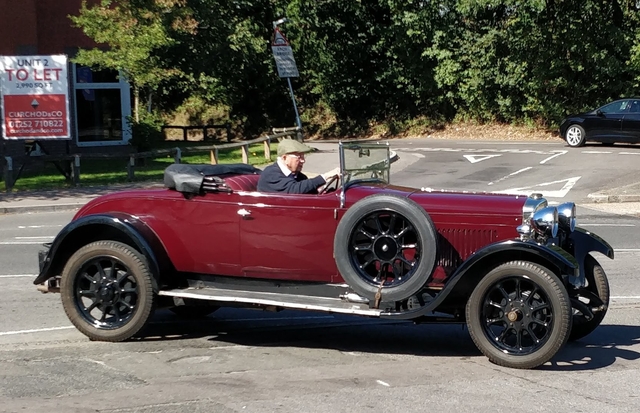
Paul Easter's 1929 Sunbeam 16HP tourer bodied by Page & Hunt
By mid-1929, the early stages of the Recession had already seriously affected P&H's ability to continue trading and in September of that year went into Receivership. However, using Circa £7000 of the inheritance left to him by his late father, who had died two months before Edward joined the RNAS, Abbott himself purchased P&H, his erstwhile employer. Abbott remained in the same premises, merely changing the name on the front door, new headed—paper - and carried on. Regrettably, some staff did have to be laid off, others choosing to leave of their own volition.
Abbott’s prime concern at this time was to find work to keep his new workforce employed. To do this he had to improve cash flow. This he achieved by installing petrol pumps, creating a second-hand car sales department and a ‘Servicing and Repairs’ workshop. His first 'coachbuilding’ task would have been to complete the Rolls- Royce that was to be presented to Lord Baden-Powell at the 25th World Scout Iamboree, at Aintree, near Liverpool in September 1929. It was all done in haste and P&H, the chosen coachbuilder, had near to no time at all to complete and fit the body. So it went to Aintree part completed, though sufficient for the car to complete some parade laps around the track, whereupon it was returned to Wrecclesham for completion. Whilst continuing to finish orders for the coachbuilt bodies already in the workshop before the 'takeover’, including a variety of Austin 7s, and taking a few orders from customers, Abbott realised there was an important role for his company in the creation of bodies for commercial vehicles, trucks and buses. Abbotts was to build bodies for a number of PSV companies, ‘Aldershot & District,’ ‘Farnham Blue,’ 'Black & White Motorways’ and 'Yellow Bus Services,’ all well known in the Farnham, Aldershot and Guildford areas. Bus, or coach bodies were placed on a wide variety of chassis, including those from Leyland, Guy, Gilford, Dennis, AEC, Albion and Reo.
This video from Friends of King Alfred Busses (Winchester) includes footage of the preserved 1935 Albion Victor 20 seater AAA756 - described as a very rare Abbotts bodied coach, powered by a petrol engine and luxuriously fitted. It was used for excursions to the races by Chisnell family.
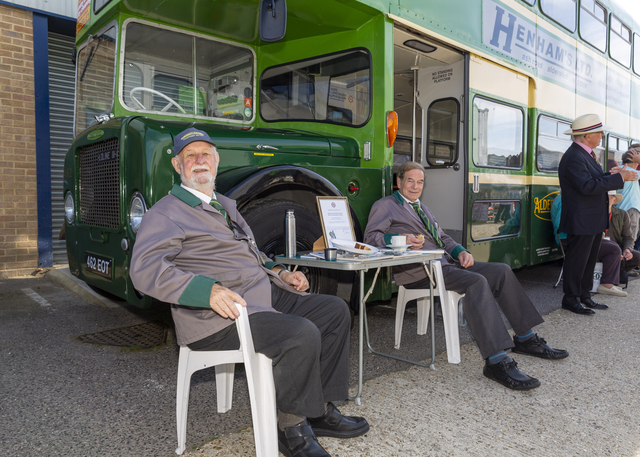
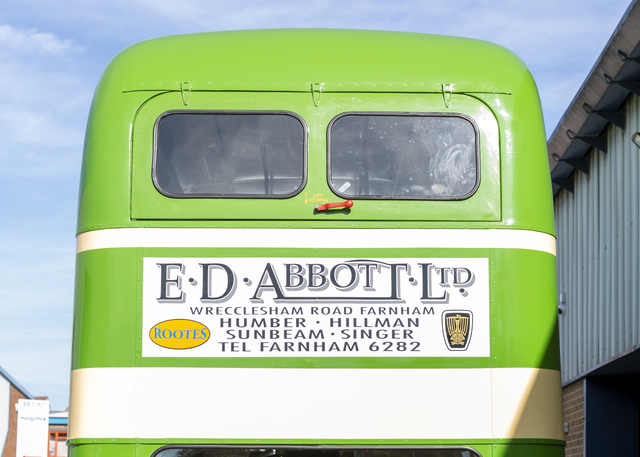
Preserved Aldershot and District bus shows period Abbotts advert
As it happened, P&H did have a, near dormant, bus-body arm, known as 'Phoenix Motors.’ So, in the conditions prevailing, Abbott was able to build upon that ‘Phoenix’ connection which came as part of his £7000 investment at what was no doubt seen at the time to be a heavy risk.
As the Recession had begun to recede, Abbott received orders to body large numbers of Talbots; Fords; Lagonda Rapier; Aston Martin, for their 15/98 model and the Frazer Nash-BMW.
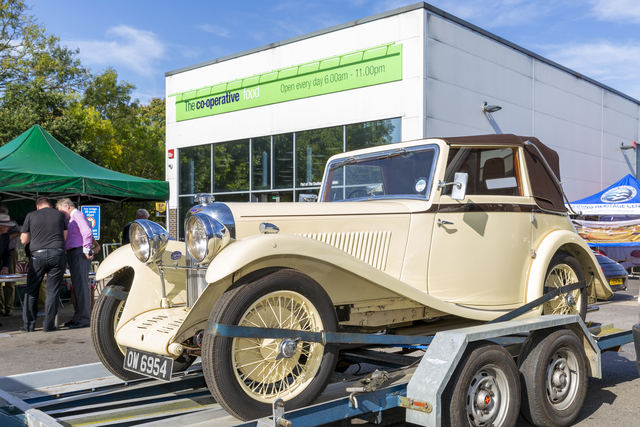
Abbotts bodied Lagonda Rapier
In 1937 Abbott secured a most prestigious order to design and build the bodies for the new, technically groundbreaking, English sports car, the Atalanta. Of the 20 Atalantas built in the two years before the war ended production in 1939, Abbotts had bodied no fewer than 19 of them.
In 1935, and no doubt benefitting from knowledge and experience gained during his years in the military, Abbott contracted his 'Abbotts of Farnham’ to the Ministry of Supply to assist in the war effort. During the next six years, his artisans designed and built: the conversion of huge trailers as mobile, aerial-photograph laboratories; parts for the Spitfire, including an air scoop that was fitted underneath the fuselage between the landing wheels for additional engine cooling when required and a special, foot operated pump to spray glycol over the cockpit screen to remove ice and snow; special containers to be filled with ammunition, weapons and stores to be dropped over occupied territories for use by the SOE and the Allies’ underground agents, they were also dropped during OP MARKET GARDEN at Arnhem in September 1944; a 2/5ths scale wooden mock—up of the German V-l rocket for use in the nearby RAE wind-tunnel to test its aerial stability, no doubt before it was decided to use Hurricanes, primarily, to ‘tip' these flying bombs out of the sky. Abbott’s designers and artisans also created sturdy trailers for ease of movement of searchiights and radar dishes over long distances, especially during the V-l onslaught, when searchlight and radar batteries were at times positioned behind Dover, then moved back towards southeast London, then to the north of the River Thames and at other times northeast into East Anglia, as the Germans varied the flying bombs’ launch locations and flight path in an effort to reduce their losses by Hurricanes, and Spitfires, shooting them down, or tipping them over.
During these times the Abbott workforce had exceeded 400 employees, female as well as male of course and including experts in trades not necessarily associated with automobile coachbuilding, but necessary to carry out rather different technical tasks during this period of conflict. The war over and an early order was secured by Abbott for the design and body production for the (Abbott) Healey, whilst all the time the company was building bespoke Rolls—Royce, Bentley, Daimler and Lanchester motor cars, including a number of the Rolls-Royce cars for well—known customers such as David Lloyd-George and Rudyard Kipling.
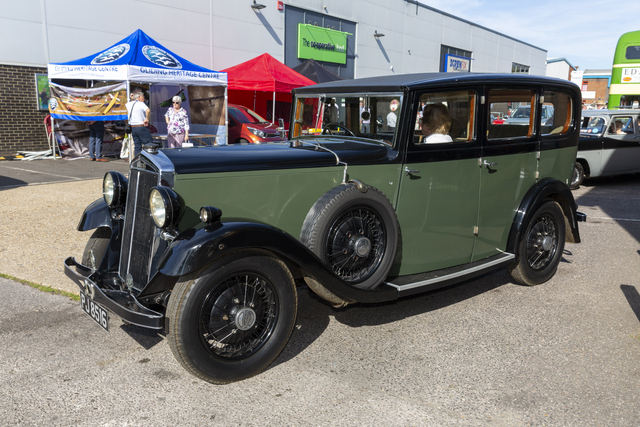
Abbotts bodied Lanchester Limousine
Mindful of the possibility of Death Duties (Inheritance Tax) befalling his family in the event of his premature death whilst 'in harness', his failing eyesight and general weakened health following the injuries he received during his service with the RNAS and which had never properly been treated, Abbott retired with his family to Scotland in late 1950. He sold his company to R. Gordon Sutherland, former MD of Aston Martin (AM), 1934—47. Sutherland had left AM following a disagreement with his Directors as to what future models the company should produce and bought a car-sales outlet in Old Windsor, named ‘Friary Motors.’ It is said that the business already belonged to AM, in which case it seems that Sutherland took it with him as part of his ‘leaving package.’
In the years between 1947 and his purchase of Abbott’s in late 1950, Sutherland developed the Friary unit to repair, service and tune AMs belonging to existing owners, race drivers and aspiring race drivers. In 1950 Sutherland, with a wealth of knowledge and experience in the motor industry foresaw the end of traditional coachbuilding, with more and more cars being built to the monocoque design. Soon after Sutherland had taken over ‘Abbotts of Farnham’ his company designer and Workshop Manager departed and a newly qualified designer, Peter Woodgate, took his place. One lunchtime, Woodgate ‘doodled’ the back end of an estate car onto a Ford Zephyr Mk1 Saloon brochure and showed it to Company Director, Mr Trevor Lloyd. Lloyd liked it and showed it to Sutherland. Sutherland liked it, so a Ford Zephyr Mk1 saloon was quickly purchased and converted into an estate car. The conversion was shown to Ford in Dagenham who gave it their approval. Sutherland was thus able to proceed to convert existing owners’ ‘big three' Ford saloons, the Consul, Zephyr and Zephyr 6 into estate cars for about £150. This rather suited these owners, for the purchase tax payable on a new estate car might have been double that amount.
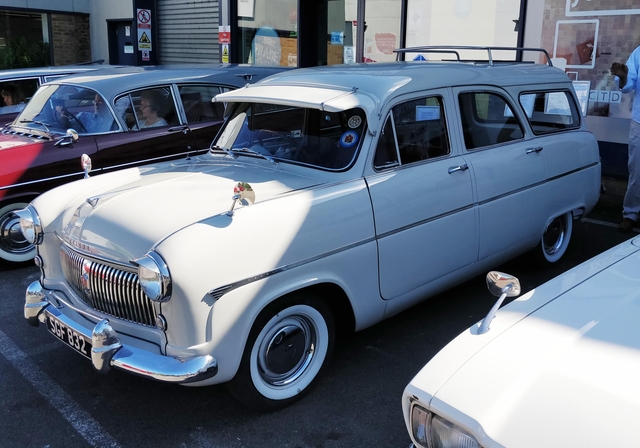
Abbotts bodied Ford Consul
And all the time, the company was building bespoke bodies for the owners of Rolls-Royce and Bentley saloons and other fine cars, with a steady stream of orders for the then-current Bentley MkVI.
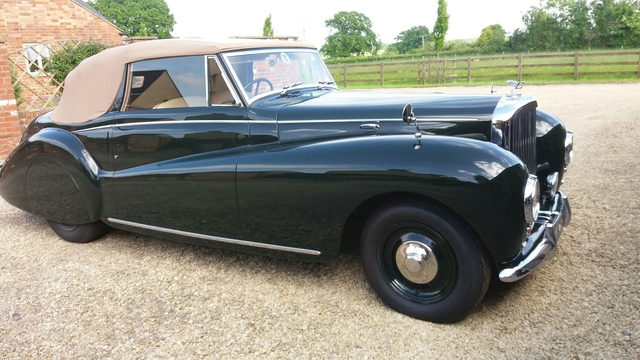
Abbotts bodied Bentley MK VI convertible - 1948 Motor Show car
'Abbotts of Farnham’ was busy. When Bentley replaced its MKVI with the ‘R' Type saloon in the mid— ‘50s, Sutherland was given a chassis, though not one of the high spec versions, and tasked Peter Woodgate to design his own version of the ‘R’ Type saloon. The result was, in my opinion, the finest looking car of its era, perhaps of all time.
In 1954, when Ford were planning the replacement for their MK1 saloons with the MK2 model, they gave Abbotts two prototype Mk2 saloons and asked him to create two, different, versions of a Mk2 Estate Car. This was duly done, with designs by Woodgate, of course. The models were known as the ‘Frensham’ and the ‘Farnham’ estates. Ford chose the ‘Farnham’ version because, they said, it used more parts from the original saloon. In fact, it used only the rear window from the saloon. This was a great pity, for the design of the 'Frensham’ would have been near jaw-dropping even today, with its large, wrap-around rear window in the split tailgate. But Ford was notorious for being ‘mean’, controlled directly by their 'bean-counters’ back in Dearborn, USA. And so Abbott secured the order to produce the ‘Farnham’ estate on the three saloons, Consul, Zephyr 4 and Zephyr 6.
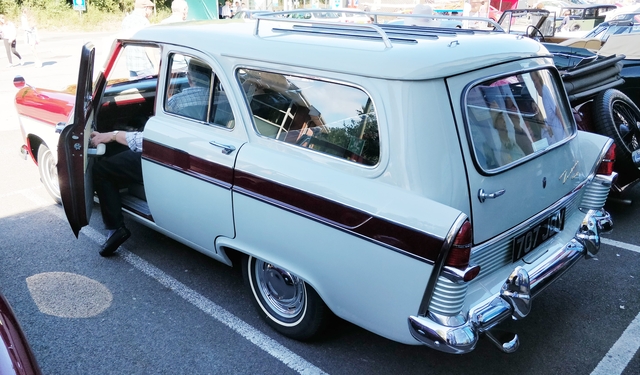
Abbotts Ford Zodiac Farnham Estate
Meanwhile, production of 16 of the beautiful Bentley ‘R’ Type ‘Continental-like’ coupes was proceeding, whilst Sutherland was awarded the contract to design and create drop-head-coupe (dhc) bodies for some 50 chassis for Bristol’s new 405 model. This replaced the 404, of which Abbott had previously been tasked by Bristol to convert (just) one from sports saloon/coupe to dhc. When the time came, in the late 1950s for Ford to replace their MK2 with the MK3, Abbott was again given the contract. For this model, Ford dropped the ‘Consul’ and the models were now named Zephyr, Zephyr- Zodiac and Zodiac. Similarly, when the MK3 was replaced with the MK4, that with the huge bonnet and spare-wheel under it, in the engine bay, Abbott was once again given the contract.
Meanwhile, Sutheriand had sold the ‘Friary‘ operation in Old Windsor and purchased a factory unit in Hatch, near Basingstoke. This was to afford the conversion of Vauxhall’s Cresta and Velox models - into estate cars, Sutherland no doubt benefitting from the Vauxhall connection he had deveioped when his Old Windsor sales outlet had become a Vauxhall Agency. The result, the Vauxhall ‘Friary’ Cresta was, in my opinion, much better looking than Abbott’s Ford estate cars.
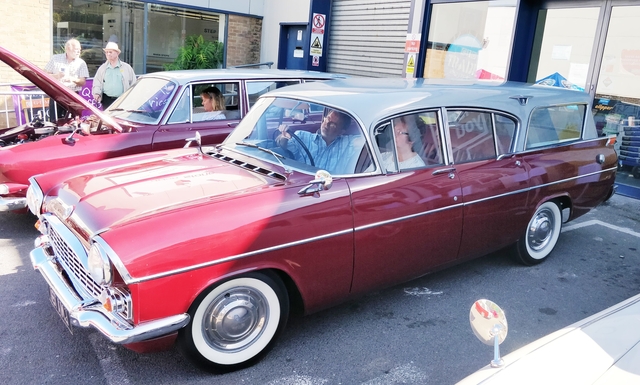
Abbotts Vauxhall Cresta
During this contract with Vauxhall, Sutherland had enormous problems with the Unions. When starting up his Hatch operation, Sutherland took some employees from his Abbott factory in Wrecclesham and supplemented them with others from London. These London fellows were strong ‘Union men’ and when the contract ended, Sutherland vowed he would never again get involved with Unions. Many have asked why the Vauxhail was not named “The Abbott Vauxhall Cresta." This was because General Motors, Vauxhall's owners, would not countenance the name ‘Abbott’, so long associated with Ford, to be attached to a GM product!
In the early 1960s, the Hatch factory was used for the conversion of the Ford Anglia 105E to estate-cars, though they were what we today would call “three door hatchbacks.”
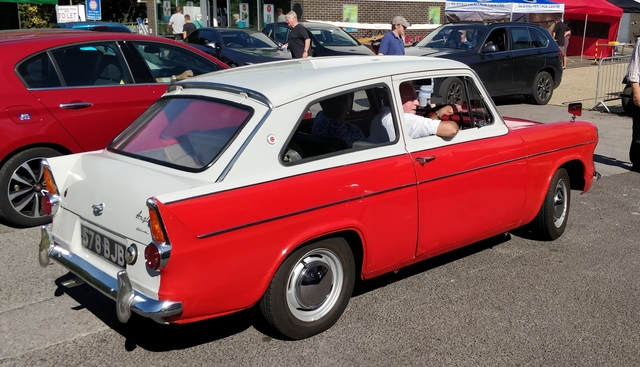
Abbotts Ford Anglia 105E
This operation was not too successful, for not only had Ford begun to build their own Anglia estate cars, but at Hatch they had put a different shaped rear window into the side of the car and somehow never managed to achieve a totally watertight seal. So the remainder of the operation was sent to Wrecclesham where the design of back end was slightly changed - and the problem was solved. When, in early 1972, Ford replaced the Mk4 saloon with the Mk1 ‘Granada,’ they had seen the enormous sales opportunity that estate- cars were providing and took estate-car production back ‘in house.’ Abbott, with all its eggs in the Ford basket. had no alternative but to close its factory gates in late February 1972 after some 43 years of trading, since 1929.
During its lifetime, 'Abbotts of Farnham’ bodied, re-bodied and converted models from no fewer that 40 different marques. That is surely a clear indication of how many owners, chassis manufacturers and Agents valued and trusted the flair of the Designer’s art and the skill of the company's artisans - panel-beaters, coachbuilders, coachtrimmers, engineers, auto electricians, French polishers, painters and the coachline specialist. All possessed unparalleled skill.
Two other features should perhaps be mentioned here are that two of the cars designed and converted by 'Abbotts of Farnham’ are in the Royal Mews at Sandringham House, property of HM The Queen. One of these cars is a 1956 Ford Zephyr estate, the other a 1959 Vauxhall Cresta estate. Both estate cars were used extensively by members of the Royal family and by the staff of the Royal Households.
The other feature might be that ‘Abbotts of Farnham’ designed and built a number of ‘one off' motor cars. Amazingly, perhaps, these included a Bugatti T50; a 4-seater Jaguar XK120; an Hispano Suiza; Ferrari 212E; Wolseley; Delage, Railton and Lea-Francis to name but a few. Even Connaught race cars were built by those peerless artisans at ‘Abbotts of Farnham.’
Len C Huff RD. The Registrar, The Register of Automobiles With Coachbuilt Bodies by ‘Abbotts of Farnham’ 25 January 2018
The Flying Flea
Designed by a Frenchman, Henri Mignet, in 1934, the Flying Flea could be built at home and cost £90 (about £5000 today). A total of 123 were completed in Britain, but scores more were never finished. Most were fitted with the tiny 25 hp Scott or Douglas engine. Maximum speed was a sedate 56mph. Sadly, after many fatalities caused by a serious design fault, it became illegal to fly unmodified Flying Fleas after June 1937. Born of the Golden Age of flying in the inter-war years, the Flying Flea had a short life, but during this time the little aircraft sparked a craze that had enthusiasts all over Great Britain and France in its grip. (Text from Yorkshore Air Museum - with thanks)
During the mid 1930s E D Abbott built and sold Henri Mignet's HM 14 Flying Flea miniature aircraft in both kit and complated form at Farnham.
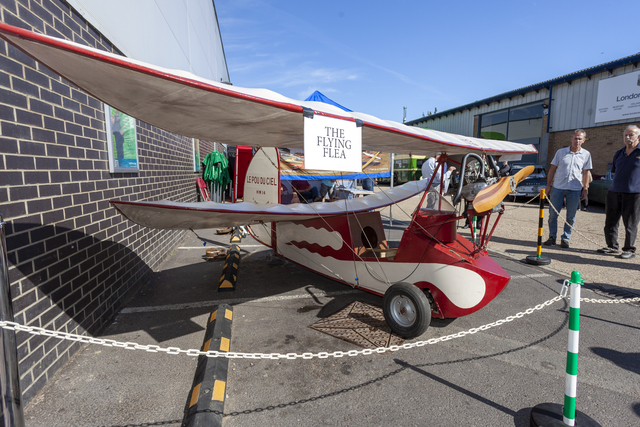
Flying Flea light aircraft
References can be found here: http://sussexhistoryforum.co.uk/index.php?topic=13693.0
You Tube Vdeo: